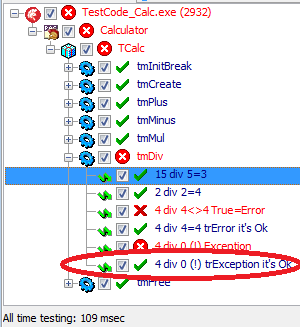Table of Contents
Glossary
Specification
a document that describes the requirements for the SOFTWARE or functionality.
Error (bag)
The mismatch between expected result
Acceptance testing
Showing compliance with software specification and implementation
Test operation
Full-fledged work at which all functionality of the new software is checked.
The basic group of tests
dynamic testing
Checking your code at run time
static testing
Analyze code without executing it
Purpose of tests
testing the code
Finding errors and checking the correct implementation of code algorithms
interface testing
Check user input, input modes, data display. When testing an interface, it is possible to test the internal code and algorithms, but interface testing cannot be used to perform a full-fledged test quickly and efficiently.
Types of tests
Modular
Tests are grouped by modules, the so-called unit testing
Functional
Tests are grouped by functionality and depend on the software project
With documents:
* Price list
* Invoices
* Accounts
* Warehouse operations
Work with transport:
* email
* tcp/ip
* ftp
With data warehouse
* SQL
* oracle
* firebird
* file
* local
* Network File System
* Cloud
Integration
Test multiple applications simultaneously
Graduation is a time overlap tests
Early testing
Warning, planned imposition of tests, before writing the code. Tests are written before the code is written. Used to write code by specification.
Current testing
Tests are imposed at the time of writing the code or immediately after the end. Tests are used to test and debug functionality, is a set of data, mainly for debugging functionality.
Later testing
Test coverage of long-written functionality. Is used mostly when is happening accumulation defects “snowball” and company is limited in any resources (temporary, financial, human). Or when the company applies a quality control system.
The levels work with the data
Test data
- prepared for functional tests
- clone of working data on which will be tested to find elusive errors or testing new functionality.
Reference data
Prepared pseudo-working data. This is the correct data for acceptance testing, showing compliance with the specification and implementation of the software.
Operational data
- situations when it is impossible to detect an error on the test and reference data and it is not possible to copy the data to the test store (database).
- test operation
Checking the result
Positive result
Если результат выполнения функционала совпадает с эталоном, то тест считает пройденным
if (2+2=4) then result:=trOk;
Negative result
Когда результат выполнения отличается эталона, то это считается ошибкой
if (2+2=5) then result:=trError;
Positive if negative result
The condition under which the functional must return an error when executed. If the test returned an error, the test is passed.
Example: 4/0=4 there must be a division by zero error If the code under test returns Exception, means test will pass. When you specify registration IRegisterMethodParams you must specify that there should be an exception trException
// Registration method IRegisterMethod(tmDiv ,'tmDiv' ,'Test Div operation');// Test methods // Registration params IRegisterMethodParams([4,0],[4],'4 div 0 = 4 (!) trException it''s Ok',trException); // Exception = Ok
Test execution modes
Manual
All tests are performed using manual actions only.
Automatic
Tests are run only programmatically
Mixed
Small manual changes in automated tests. For example in TestCode during testing you can change the number of repetitions
Test execution order
Serial
All tests are run in order.
Random
Performed in random order. Random execution can be of several kinds:
- Randomly within one
- method
- class's
- unit
- module's
- Random execution in integration testing
In turn
This test execution order applies to integration testing
Performance
Check for compliance with technical requirements, conduct a performance degradation assessment: A graph is drawn up, the limits of effective work, identifying critical boundaries, calculating the exponent of reduced performance, determining the weakest link, finding solutions if load testing does not meet the requirements
Speed
Checking how fast the work with the processing and transmission of data with the reference volume is performed:
Load
Speed is tested with increasing data volume
Stress-testing
Check for an increase in the number of concurrent instances of the software
Testing development tools and operational environments
inner part
What depends on us
- libraries, third-party components with source code
- native libraries and components
- modules of the developed software
outer part
We can't explicitly affect the reduction and correction of errors, but we can test for the parameters we need
- HardWare testing
- performance
- пsupport for instructions used
- operation of the graphics system
- network equipment
- SoftWare testing
- testing the operating system
- work of the operating system
- use a database
- Testing the environment
- with third party programs installed by the user
- development too
- compiler
- non-source components and libraries


